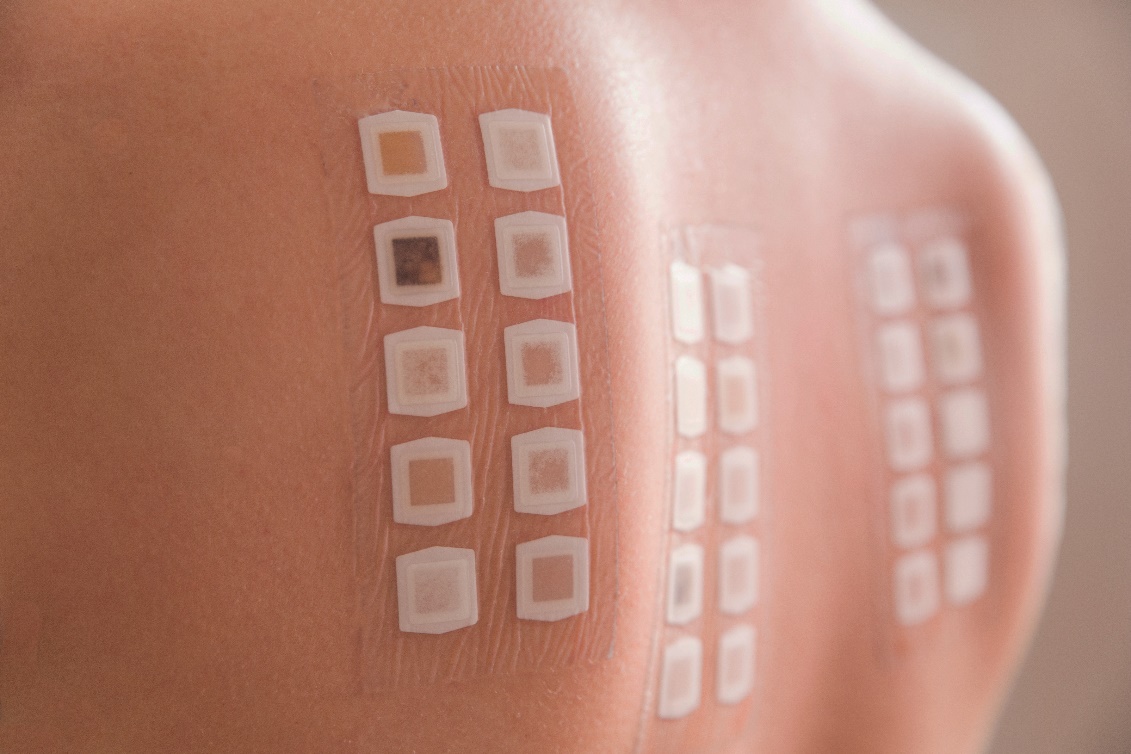BACK TO HOMEPAGE
Allergology and drug eruptions
New contact allergens – Ana Giménez-Arnau (Spain)
Contact dermatitis (CD) is an inflammatory reaction of the skin after direct contact with harmful agents in the environment. The history of contact dermatitis is indistinguishable from the history of patch testing, which is considered the main tool for determining a chemical or protein etiology. To better understand how avoidance and preventive strategies can be implemented in allergic CD, it is important to consider the most prevalent allergens or irritants. Updated information will be reviewed about the allergens that currently constitute the most important health alerts for CD which are fragrances, biocides, acrylates or metals.
Prevention
Primary prevention strategies aim to avoid exposure to allergens via a risk management process, which
multiple professionals consult on, such as chemists, toxicologists, engineers, biologists or physicians, among others. Legislation is discussed as a useful prevention tool against major allergens. Once the patient has been sensitized, secondary and tertiary prevention measures are then required.
The identification of a new allergen begins with isolated cases that are commonly studied in specialized contact dermatitis clinics, and national and international networks are necessary to identify new risks involved in the epidemic nature of contact dermatitis. This lecture highlights the challenges in eliminating the use of identified contact allergens, since there is no ideal substitute and only concomitant research of new effective and safe materials would avoid the use of classical or newly identified contact sensitizers.
The lecture discusses various examples of chemical products, textiles, new preservatives, drugs etc. that show a potential risk of sensitization and irritation, and how the European Commission, through the Scientific Committee on Consumer Safety, constantly develops its recommendations on their safe use.
The impact of such a reduction in the risk of sensitization requires constant surveillance and analysis of the prevalence of sensitization over the years, only made possible by well-established networks at the national level such as REIDAC-GEIDAC or ESSCA (European Skin Surveillance for Contact Allergy). CD is especially relevant when it implicates the working life of patients. The identification of skin allergens, irritants and carcinogens is crucial and contributes to reducing the incidence of professional CD and its socioeconomic burden.
CD requires a holistic approach considering potential barriers to optimal management when evaluating people with CD, such as limited number of active treatments, patient education or poor access to care. Contact dermatitis is a multidisciplinary science where chemistry, health science and biology are all closely related.
New treatments for chronic urticaria – Martin Metz (Germany)
For many decades, antihistamines have been the only approved treatment for chronic urticaria and we were unable to sufficiently treat the majority of our patients. This has changed, at least for chronic spontaneous urticaria (CSU), with the approval of omalizumab for the treatment of CSU. Since then, many patients who would have suffered from CSU for years were able to receive an effective and safe treatment. Although this has improved the lives of our patients and their treating physicians considerably, there is still a substantial number of CSU patients who only show a partial response to treatment, a delayed response or no response at all. Therefore, novel treatment options for all types of urticaria, including type IIb autoimmune CSU and CINDU patients, are needed.
Apart from IgE, there are a number of potential targets that are of interest in the treatment of urticaria, but also for other mast cell-mediated diseases. Indeed, there are currently many drugs in different stages of clinical development that aim at direct inhibition of mast cell activation, the silencing of mast cells or the depletion of mast cells. This includes monoclonal antibodies that target cytokines or cytokine receptors such as TSLP, IL-4R or IL-5R, inhibitory mast cell receptors such as siglec-8 or the KIT receptor, as well as small molecules inhibiting complement factors, mas-related G protein-coupled receptor X2 or the signal transduction molecule BTK. Some of the respective molecules are currently in phase 2 or phase 3 trials in CSU and/or CINDU, which gives us hope for new and potentially more patient-specific treatment options.
In this presentation, the recently reported results from a phase 2 study with the BTK antagonist remibrutinib in CSU will be summarized and discussed, and the available data for the effects of mast cell depletion and mast cell silencing in both CSU and CINDU will be reviewed.
symposium full ticket details and prices

KEEP IN TOUCH
Stay informed about latest EADV information.
Congresses, Education, JEADV, Membership, Newsletter...
YES, KEEP ME INFORMED

European Academy
of Dermatology and Venereology
HQ:
Via S. Balestra 22B
6900 Lugano Switzerland
+41 91 973 45 20
symposium@eadv.org
PRIVACY POLICY
COPYRIGHT EADV 2022
TERMS OF USE
Only trust information from our official website: eadv.org




